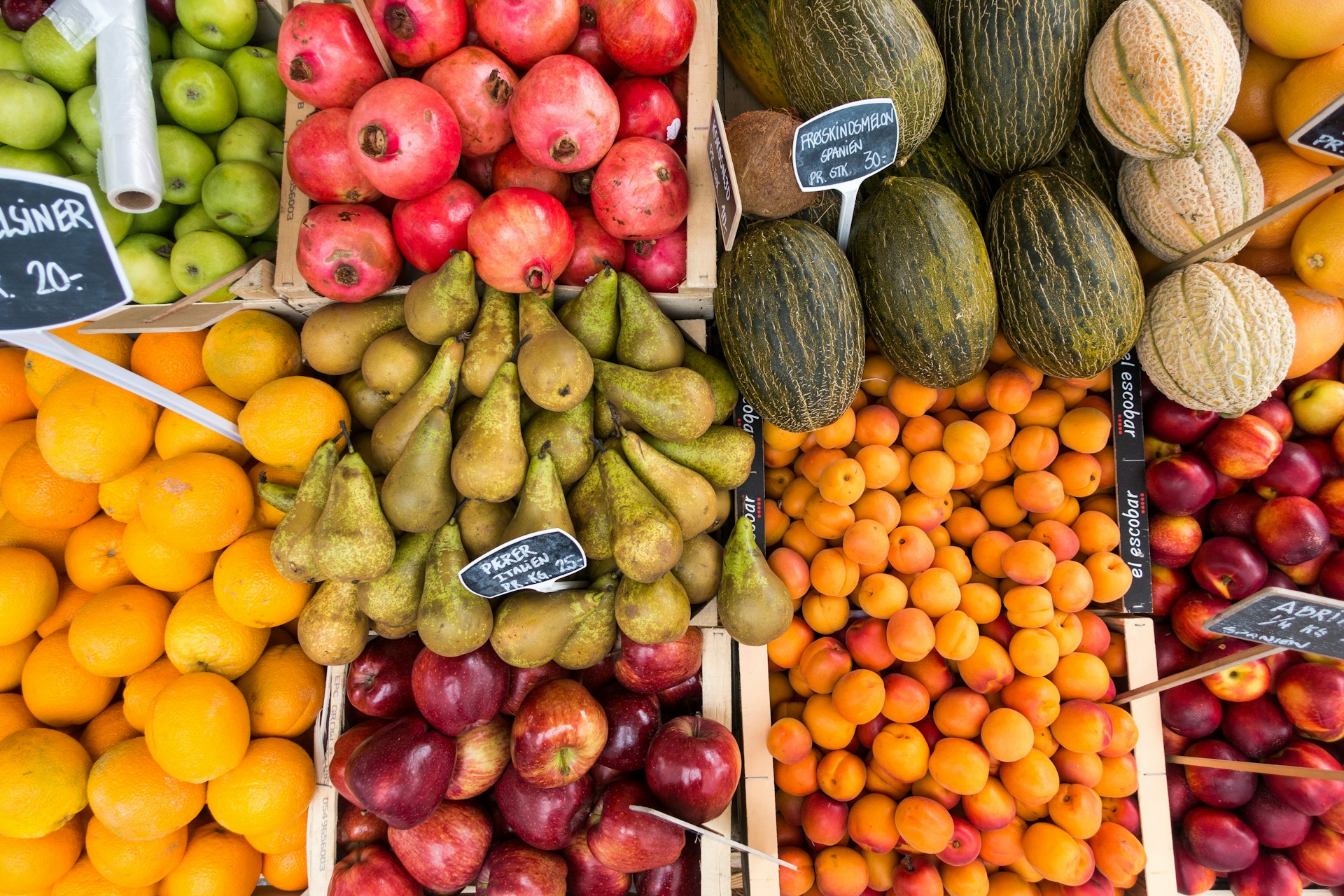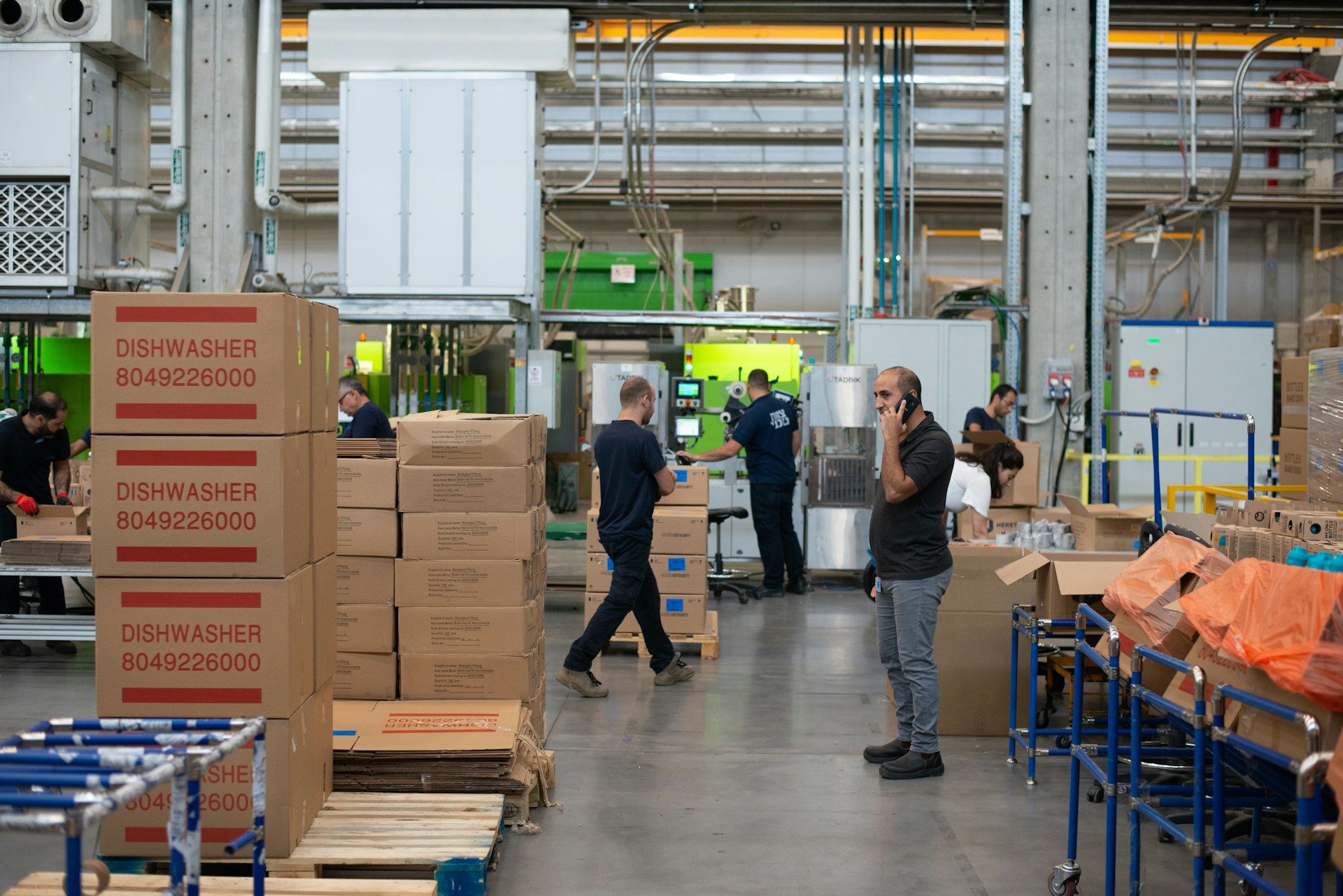Ensuring compliance with evolving packaging regulations can be a daunting task for any business in the fresh produce industry.
Knowing the right way to navigate these rules, however, is essential for successful execution and minimal disruption.
Undoubtedly, these regulatory shifts present an array of challenges but also opportunities for those willing to adapt.
This article aims to provide practical and proven strategies for staying ahead of produce packaging regulations.
It will highlight key areas you need to be aware of and tactics that will help you maintain compliance.
After all, adhering to legislation and standards can mean the difference between thriving in this competitive market or facing unnecessary legal complications.
Contents
- Ways To Stay Ahead Of Produce Packaging Regulations
- 1. Regularly research and follow FDA packaging regulations.
- 2. Attend Webinars, Seminars on Packaging Regulations
- 3. Use Sustainable and Biodegradable Materials
- 4. Don’t Over-Package Produce
- 5. Hire a Compliance Expert for Guidance
- 6. Regularly train staff on packaging standards.
- 7. Ensure Proper Labels and Nutritional Information
- The Bottom Line
Ways To Stay Ahead Of Produce Packaging Regulations
1. Regularly research and follow FDA packaging regulations.
Regulations in the packaging industry are governed by various organizations, among which the FDA takes a cenrtal role in maintaining food safety.
The FDA, or the Food and Drug Administration, is a federal agency responsible for the control and supervision of food safety along with various other health products.
In regard to produce packaging, the FDA sets forth stringent rules and regulations that are necessary to ensure product safety and integrity.
Staying ahead of these ever-evolving rules and regulations is vital for the success of any firm in the food industry.
This demands consistent research, understanding, and adherence to the current packaging standards put forth by the FDA to maintain compliance.
All types of food products, including fresh produce, fall under the scope of these regulations, thus making it imperative for businesses to stay updated.
Regular research on FDA packaging regulations can help businesses stay ahead of their compliance requirements and avoid potential pitfalls related to non-compliance.
Understanding concepts like packaging materials, labeling requirements, allergen information, and the like is necessary when complying with FDA packaging standards.
There are wide-ranging resources available for businesses to stay updated with the latest developments and changes in the FDA packaging norms, both online and offline.
Official FDA websites, regulatory reports, newsletters, and various regulatory portals offer ample literature and details on the updated packaging regulations, making it an invaluable resource fountain for businesses.
Besides staying updated with the FDA regulations, businesses should also proactively understand the rationale and science behind these regulations, thereby being able to implement them more effectively.
These understandings can also help businesses foresee upcoming changes, thereby being able to prepare and adapt well in advance.
Furthermore, staying abreast with these regulations will ensure businesses they are meeting minimum safety requirements, and in many cases, it’s a practice that will make their products more desirable to the health-conscious consumers.
Non-compliance, on the other hand, may lead to fines, recalls, tarnish the brand image and even result in business closures, hence the need to stay ahead of packaging regulations.
Lastly, seeking guidance from compliance mentors or hiring a compliance expert for the company can be beneficial in understanding and following these complex FDA packaging regulations, ensuring one stays at the forefront of industry standards.
2. Attend Webinars, Seminars on Packaging Regulations
Being in the produce packaging industry requires constant learning and adaptation to stay ahead of regulations.
One effective way of doing this is through engaging in webinars and seminars specifically tailored to packaging regulations.
These digital knowledge hubs provide in-depth discussion of existing regulations as well as plausible changes and updates in the future.
Industry experts who have gained years of experience and expertise frequently lead these webinars and seminars.
By attending these informational meetings, you are positioning your business to be at the forefront of knowledge, which can help in navigating the ever-evolving world of packaging regulations.
It’s not just about the legal aspects; these webinars and seminars also tackle best practices and latest trends.
This information can give you an understanding of what consumers are expecting from produce packaging, and how best to incorporate those elements into your own packaging design.
By attending these sessions, you also get the opportunity to network with other industry professionals who may have unique insights and advice to share.
An additional advantage of webinars and seminars is the Q&A section that usually wraps up the meeting.
This is particularly beneficial if you have specific inquiries or scenarios concerning packaging regulations that you need clarity on.
Webinars are also a convenient and cost-effective means to update your knowledge, as you can join them from wherever you are, hence eliminating travel costs.
Some webinars are also recorded and accessible for watching at a later time, which allows for flexibility in learning.
But it’s important to not just passively attend these webinars; to truly benefit, it’s crucial to actively participate in discussions and ask questions.
Whether you’re new to the industry or a seasoned pro, there’s always something to learn from these webinars and seminars.
In essence, it’s an investment in your business’s sustainability and growth by ensuring that you are always on top of what is vital in produce packaging regulations.
3. Use Sustainable and Biodegradable Materials
In the current era of heightened environmental awareness, using sustainable and biodegradable materials in produce packaging has become a critical consideration for businesses in the food industry.
Produce packaging made from renewable and biodegradable materials not only reduces environmental footprints, but also meets the demands of increasingly eco-aware consumers.
This way businesses are not only fulfilling their environmental responsibilities, but they are also staying in line with customer expectations and regulatory standards.
In terms of biodegradable materials, there is a variety available, including mushroom-based packaging, seaweed-based packaging, and compostable plastic alternatives.
These materials decompose naturally in the environment, causing little to no harm.
Additionally, biodegradable packaging options often require less energy to produce and can support circular economy initiatives.
The key lies in choosing a material that suits the specific type of produce, is sustainable, biodegradable, and falls within the accepted regulatory norms.
However, employing these materials also comes with challenges, one of the main ones being the cost factor.
Biodegradable materials are also sensitive to temperature and humidity, which could potentially affect the shelf-life of products.
It is also essential to be aware that there are specific regulations regarding the use and labeling of biodegradable materials, these must be considered to avoid breaking any regulations.
Hence, while the use of biodegradable materials has numerous benefits, it is important for businesses to conduct thorough research and consider all factors before selecting the most suitable material for their produce packaging.
Sustainable use of packaging material also implies reducing unnecessary waste.
Wherever possible, businesses should aim to incorporate the principles of reduce, reuse, and recycle to minimize waste.
Adopting these measures, whether through using minimalistic designs or repurposing waste, can lead to significant cost savings in the long run while ensuring compliance with regulatory standards.
To successfully utilize sustainable and biodegradable materials in produce packaging and stay ahead of regulations, businesses should continuously monitor the latest developments in the field.
4. Don’t Over-Package Produce
One of the key ways to stay ahead of produce packaging regulations is by not over-packaging.
Industries have been noted to waste resources by using excessive packaging materials, an occurrence that could easily be avoided.
This applies significantly when dealing with perishable goods such as fruits and vegetables, which require minimal packaging.
Implementing a packaging strategy that focuses on using just the right amount of materials can drastically reduce waste and costs, promoting sustainability and efficiency.
Over-packaging not only increases your business operation costs but also leaves a massive environmental footprint due to the waste generation from the packaging materials.
Cost savings and environmental responsibility are key considerations in modern businesses, hence reducing packaging wherever possible stands as a strategic move.
Regulations are also increasingly emphasizing on the reduction of packaging to promote sustainability. Employing minimum packaging can help you stay ahead of such regulations.
Hence, being cautious of the quantity and necessity of packaging used is a crucial step towards maintaining compliance with the evolving regulations.
It is essential to remember that every additional layer of packaging will also need to comply with regulatory standards, adding to the complexity of the packaging process.
Avoiding over-packaging also helps in maintaining the freshness and quality of the produce.
Excessive packaging could potentially damage the fruits and vegetables, affecting their visual appeal, a key factor influencing the customer’s purchasing decision.
Simultaneously, certain packaging materials can have adverse effects on the produce’s lifespan, decreasing its shelf-life.
Therefore, minimizing packaging not only helps in adhering to regulations but also contributes to maintaining the integrity and quality of the produce.
This presents a two-fold benefit to producers, whereby they not only ensure compliance but also maintain customer satisfaction and loyalty.
5. Hire a Compliance Expert for Guidance
When your business deals with food, especially fresh produce, it might be difficult to keep up with the rapidly changing regulations from agencies like the FDA.
One solution to this predicament is to hire a compliance expert with firsthand knowledge and experience in regulatory matters.
This expert’s central role is to guide your company through complex regulatory landscapes and ensure your company’s packaging practices consistently comply with the required standards.
They can be either an in-house employee or be hired on a consultant basis depending on the nature and size of your company.
Their expertise would help prevent potential violations that could result in substantial fines and tarnish the company’s good reputation.
Without a doubt, a compliance expert is a critical asset that carries an important role in ensuring your company’s regulatory adherence.
In addition to helping you mitigate risks, a compliance expert could also provide valuable insights and suggestions on how to optimize packaging processes and thereby save costs and resources.
By keeping you informed about the latest packaging regulations changes, they ensure that your business stays ahead of the curve.
However, hiring a compliance officer isn’t as easy as it sounds as this position requires a perfect balance of legal knowledge, industry experience, and communication skills.
The candidates should be capable of interpreting and implementing complex regulations, liaising with regulatory bodies, and effectively communicating the rules to your staff.
Thus, when looking to hire a compliance expert, one must recognize their key role in the organization and invest adequate time and resources to find the best match for the job.
Remember, the right compliance officer can go a long way in building consumer trust in your produce by ensuring that each package is not only safe but also legally compliant.
Therefore, hiring a compliance expert should not be seen as an expense, but rather as a fruitful investment that can benefit your business in the long run.
After all, the health and safety of your consumers should be the top priority for your company, and that begins with the packaging of your products.
Thus, keeping updated on the regulations and maintaining compliance should be the cornerstone of any produce company, and hiring a compliance expert plays a significant role in that respect.
6. Regularly train staff on packaging standards.
In the fast-paced environment of the produce industry, staying ahead of packaging regulations not only requires diligence and adherence to legal requirements but also outreaching to each layer of the organization, specifically the staff handling the packaging process.
One of the key practices is to regularly train your staff on packaging standards.
Training sessions on up-to-date regulations and packaging protocols ought to be implemented at regular intervals, ideally once every few months.
The core aim of such a training is to ensure that the personnel are aware and compliant with the latest packaging standards stipulated by the FDA and other relevant authorities.
Moreover, these sessions can provide a platform for the staff to raise questions, address their concerns, and learn more about best practices in implementing the stipulated standards.
By doing this, a clear message is conveyed to the staff that the company takes packaging regulations seriously, which can essentially motivate them to uphold the standards effectively.
With such a regular system in place, the risk of breaches in packaging standards can be significantly reduced.
Moreover, it can ideally foster a comprehensive understanding and respect for the importance of adherence to packaging regulations, which would directly translate to the quality of packaged produce.
The training sessions could encompass various elements, including correct labeling, use of permissible and eco-friendly materials, accurate portrayal of nutritional information, and optimal packaging size.
Such a holistic approach would ensure that each aspect of packaging – from the very material used to the information displayed – meets the latest standards and requirements in the industry.
Regular training can also provide an opportunity for a company to encourage innovation among employees, empowering them to come up with packaging solutions that are not only compliant with regulations, but also environmentally friendly and cost-effective.
The essence of this practice lies in the belief that knowledge is power – when the staff is well-informed, they can make the right decisions and uplift the standard of packaging in the company.
This not only protects the business from legal repercussions but also contributes to its success by improving the quality of products and thereby, customer satisfaction.
Remember, the ultimate goal is to strike balance between meeting business objectives and following produce packaging regulations, and regular staff training on packaging standards plays a significant role in achieving this balance.
Overall, training is an effective method to maintain a company’s commitment to staying ahead of produce packaging regulations.
7. Ensure Proper Labels and Nutritional Information
One of the most crucial aspects of adhering to produce packaging regulations is ensuring the correctness and completeness of labels and nutritional information provided with the produce.
In fact, not providing sufficient or accurate information can lead to serious penalties and even product recalls.
Consumers rely heavily on this information to make informed and healthy food choices, hence, there’s a critical importance in making sure it is accurate and straightforward.
Every packaging must distinctly carry the complete name of the product, ingredients, net quantity of content, and name and address of the manufacturer or distributor.
Additionally, nutritional labeling – which includes data about calories, fat content, sugar, vitamins, and minerals among other specifics – is mandatory for almost all food products under FDA regulations.
In the case of fresh fruits and vegetables, they may not require a nutrition facts panel, but if a nutrition claim is made on the labeling, then it must provide full nutritional information.
It’s therefore crucial to remain up-to-date with FDA guidelines on labeling and to ensure your labels meet their standards.
Accurate labeling also aids in establishing customer trust, as an informed customer is more likely to be a repeated customer.
Another factor to consider is that the label should be visible and easy to understand even for a person with minimal understanding of food terms.
Apart from English, it’s recommended to provide information in regional languages as well, whenever possible, to ensure broader reach and understanding.
It’s also good practice to provide information about any potential allergens in the product, even if it’s not necessarily mandated by law.
Lastly, make sure to include any special storage instructions, especially for products which require refrigeration or have a short shelf life, thereby aiding customers in maintaining the freshness of the produce post purchase.
Ensuring the complete and accurate labeling of your produce is not just about meeting regulations – It’s also about being transparent and accountable to your customers.
By adhering to these principles, you can avoid regulatory complications and also improve customer satisfaction and loyalty, which ultimately means business growth.
The Bottom Line
Adherence to FDA packaging regulations is crucial in ensuring food safety and legal compliance.
From regular research to staff training, each step contributes significantly towards upholding these standards.
Making use of sustainable materials and avoiding over-packaging also enhances environmental responsibility.
Additionally, procurement of expert advice plays a key role in successfully meeting regulatory demands.
Ultimately, applying accurate labels and nutritional information adds to the transparent consumer communication and trust which are as important as the quality of the product itself.




